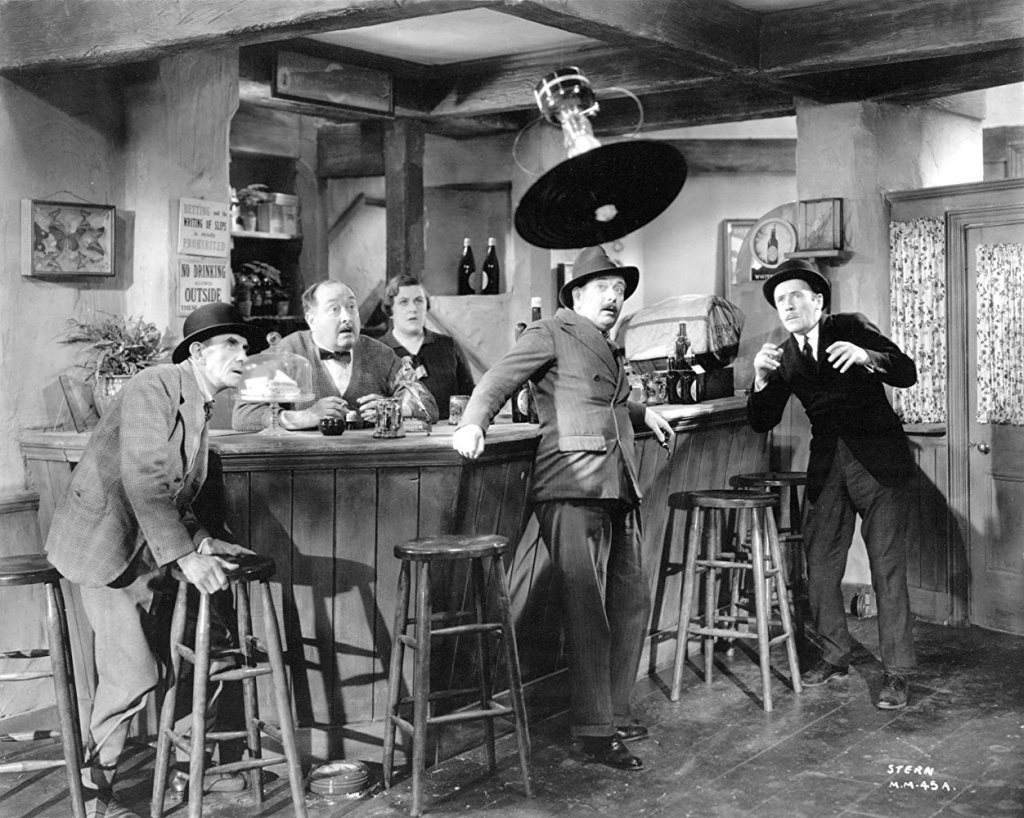“The Man Who Could Work Miracles” is a short story by the English author H. G. Wells (1866–1946) first published in the Illustrated London News in July 1898 with the subtitle “A Pantoum in Prose”. It was also included in the collections The Country of the Blind and Other StoriesCollection of 33 short stories by H. G. Wells, first published in 1911. (1911) and Tales of Space and TimeCollection of three short stories and two novellas by H. G. Wells, first published in 1899. (1899),[1] and has been adapted several times for radio and film.
Synopsis
The story is told as a third-person narrative, and begins in the Long Dragon public house, where George McWhirter Fotheringay is in animated conversation about the impossibility of miracles. In an attempt to prove his point by way of demonstration, he commands an oil lamp to turn itself upside down and continue burning, which to his astonishment it does. His acquaintances accuse him of performing a silly and dangerous trick and quickly dismiss it.
After returning home, Fotheringay explores his new power by turning a glass of water pink, then green, and creating a new toothbrush for himself, among other tricks; it seems that he simply has to will something to happen and it does.[a]The story does not reveal the source of Fotheringay’s new power, but in the 1937 film adaptation Wells attributes it to an elemental entity, the Giver of Power, who has bestowed it as an experiment in human potentiality.[2] Fotheringay decides the next evening after work to visit a lane behind the gasworks, “to rehearse a few miracles in private”, during which he accidentally causes some minor injury to a local constable. Irritated by the ensuing altercation Fotheringay sends the policeman to Hades, but regretting his decision a short while later relocates him to San Francisco, without any idea of where that city is.
Unnerved by these miracles, Fotheringay attends a Sunday evening chapel service, at which the clergyman, Mr Maydig, preaches about unnatural occurrences. Fotheringay is deeply moved, and approaches Maydig for advice. After a few petty demonstrations in his manse, the minister becomes enthusiastic and suggests that Fotheringay should use his abilities to benefit others. That night they walk the streets of the town, reforming every drunkard, draining Flinder’s swamp, improving public works, and even curing the vicar’s wart.
In his enthusiasm Maydig suggests that they could achieve more if Fotheringay were to lengthen the night by stopping time. Fotheringay agrees to try, and addressing the Earth says “Jest stop rotating, will you.” Immediately he finds himself flying through the air head over heels, so fast that his clothes begin to singe; although the Earth has stopped rotating, the objects on its surface have not, causing them to be hurled forwards with great force. Just in time, Fotheringay succeeds in saving himself with another miracle – “Let me come down safe and sound” – but every other living thing has been destroyed; he is the only surviving human being on the planet.
Overcome by a “great disgust of miracles”, Fotheringay wishes the world to be restored to a time before he was able to perform them, and that the power should be taken from him. Immediately he finds himself back in the Long Dragon public house discussing miracles with his acquaintances, without any recollection of what has gone before.
The narrator recounts the final miracle by informing the readers that they had died in the apocalypse more than a year ago, and been resurrected.
Commentary
Had the omniscient narrator been human he too would have died and been brought back to life without any recollection of the day the Earth stopped rotating, so perhaps Wells had in mind a forerunner of the demigods that appear in his later screenplay.
The subtitle “A Pantoum in Prose” is a reflection of the structure of the story, which ends exactly as it began. A pantoum is a verse form with rhyming quatrains of the form abab, bcbc etc, ending with the rhyme “a”.[3]
Adaptations
The story was first adapted for BBC Radio in 1934 by Laurence Gilliam, and broadcast on 4 June that year.[4] Several other BBC Radio adaptations followed, including one in 1956 written by Dennis Main Wilson and starring Tony Hancock as Fotheringay.[5]
The film Man Who Could Work Miracles, based on a scenario written by Wells, was released by London Film Productions in 1937. Essentially an elaboration of the short story, the film starred Roland Young as Fotheringay.[6]
See also
- H. G. Wells bibliographyList of publications written by H. G. Wells during the more than fifty years of his literary career.
Notes
| a | The story does not reveal the source of Fotheringay’s new power, but in the 1937 film adaptation Wells attributes it to an elemental entity, the Giver of Power, who has bestowed it as an experiment in human potentiality.[2] |
|---|
References
Bibliography
External links
- Full text of “The Man Who Could Miracles” at Project Gutenberg

